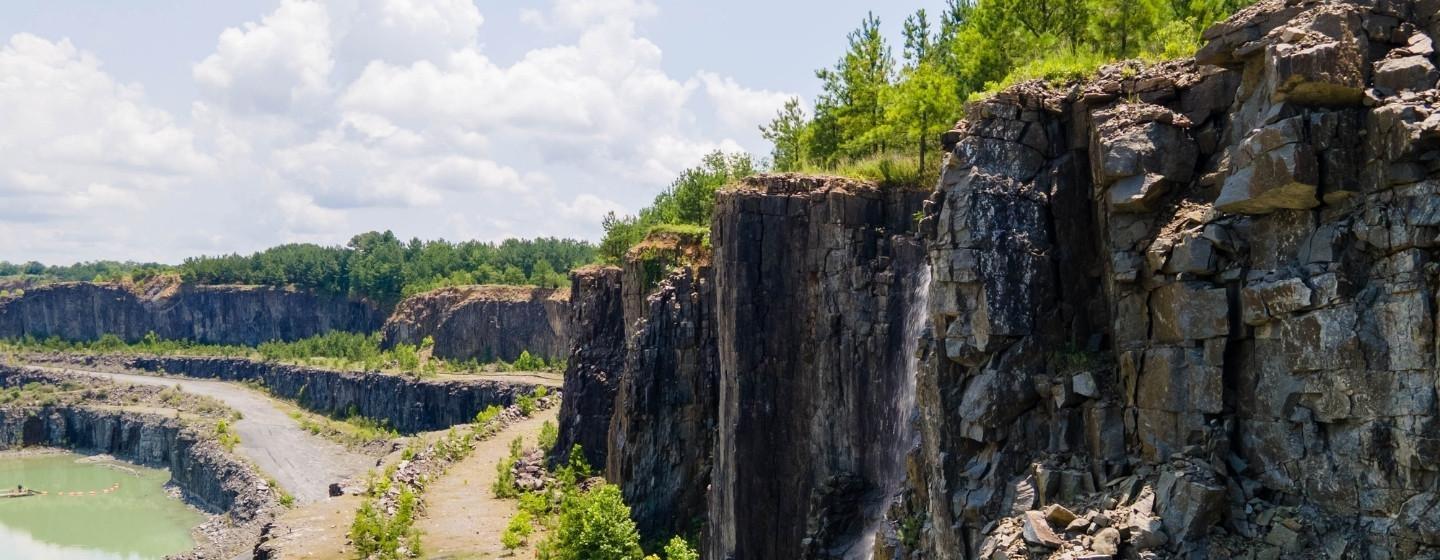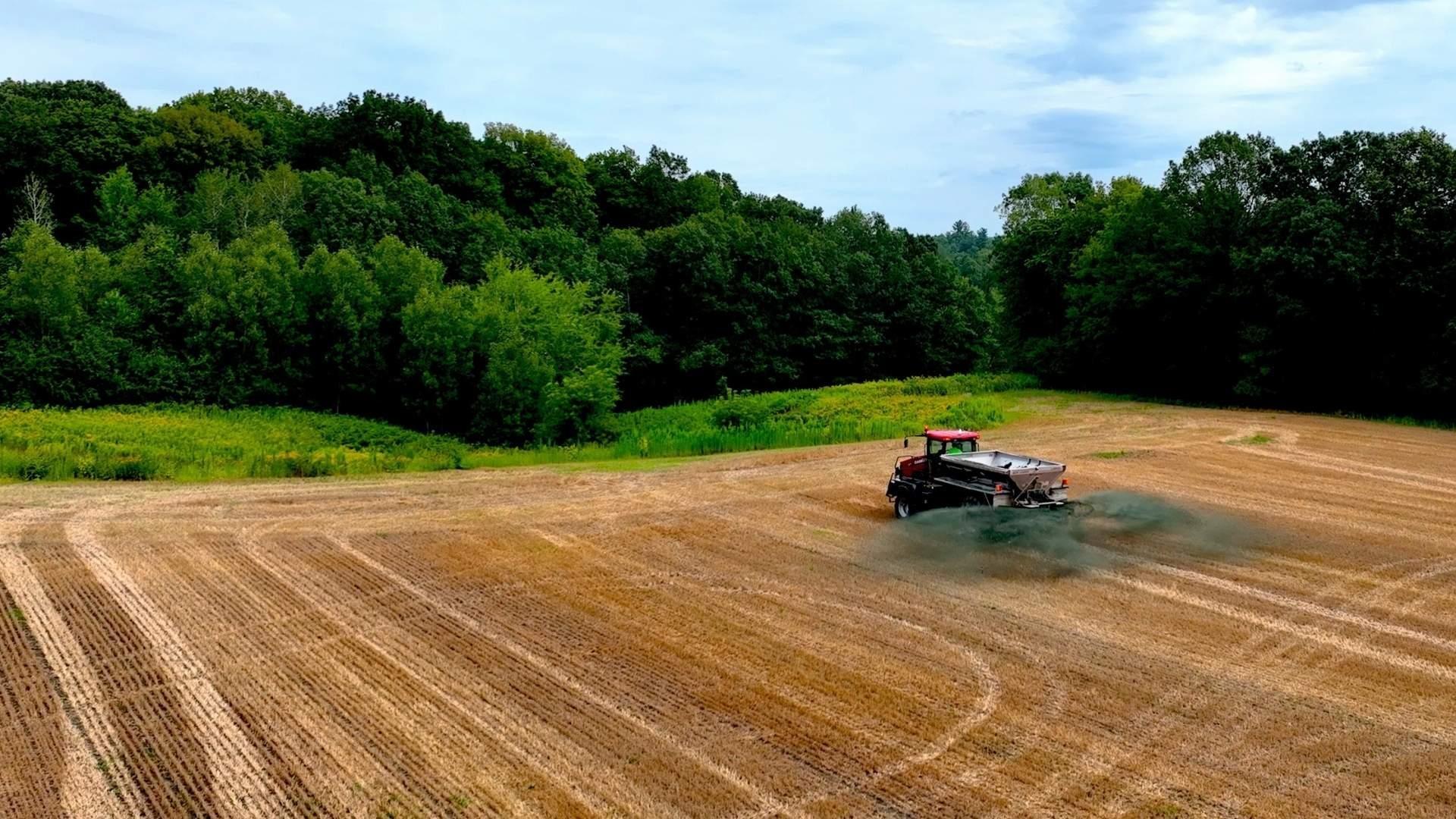Old Rocks Help Farmers Fight Climate Change


Part of the solution to climate change is right under our feet. That’s because, with a little help from humans, rocks can capture millions of tons of carbon every year.
That’s right: rocks, especially limestone and basalt, can pull carbon out of the atmosphere and counter global warming.
That’s why Raleigh-based construction materials company Sunrock Industries has partnered with Lithos Carbon for a carbon removal project using what’s called “enhanced rock weathering technology.”
This technology involves finding a new use for the rock dust from Sunrock Industries’ Butner basalt mine. Until now, the dust was considered a waste product and was discarded near the mine until the pile stood about 120 feet tall. The dust is now being removed and spread onto farms.
“What began as an exploration two years ago has evolved into an exciting climate solution that also creates economic opportunities for local farmers,” said Alex Culpepper, vice president of corporate business development at Sunrock Industries, in a press release. “The basalt produced here is rich in minerals ideal for carbon sequestration and provides valuable nutrients for agriculture. This project is a win for the climate, a win for farmers, and a win for North Carolina.”

In a Good Morning America story, Mary Yap, cofounder and CEO of Lithos Carbon, uses this metaphor to explain why rock dust is used: What would do a better job of sweetening your morning coffee: a rock of sugar or a spoonful of powdered sugar?
Both would make the coffee sweeter, but the rock of sugar would take longer to dissolve. Because there is more surface area of sugar exposed to the coffee, the powdered sugar would dissolve quicker and sweeten the coffee faster.
When it comes to absorbing carbon from the atmosphere, the spoonful of sugar for this partnership is basalt “fines,” finely crushed material produced during Sunrock’s quarrying operations in Butner. The fine rock contains minerals that sequester carbon dioxide. When spread across farmland, the rock particles interact with moisture and atmospheric carbon to initiate mineral weathering. That’s an accelerated version of a natural process Earth has used for billions of years to manage carbon levels.
Think of it as supercharging what nature is already doing.
“Partnering with Sunrock Industries has accelerated our deployment of high-quality, community-driven carbon removal across North Carolina,” said Yap in the release. “Sunrock’s deep local roots, strong community ties, and family-owned ethos helped bring this project to life, delivering real benefits to the land. Their commitment to sustainability and quality is evident at every step.”
Not only is the project good for the environment, it’s a win-win for farmers, who can apply the basalt dust to their land with standard farm equipment. Growers can generate additional revenue by deploying carbon capture technology, and the basalt dust also contains important nutrients for crop production, including phosphorus, zinc, iron and boron. The material even acts as a slow-release fertilizer that also helps with soil regeneration.
“What makes this partnership particularly exciting is that we’re turning what was once considered excess quarry material into a powerful tool for climate action,” said Culpepper. “The first trucks of Butner rock fines began delivering to local properties in late October 2022, initiating carbon dioxide removal immediately.”
Discover how another mineral can absorb carbon in the ocean in this Sci NC story.
The mineral olivine soaks up CO2. Can we harness its power to achieve net-zero emissions?